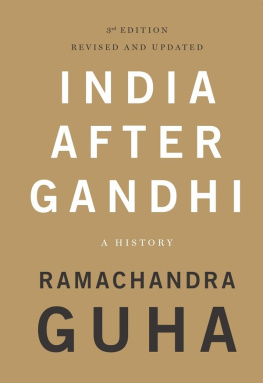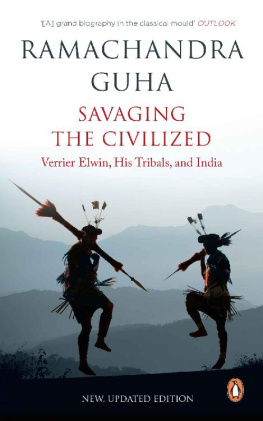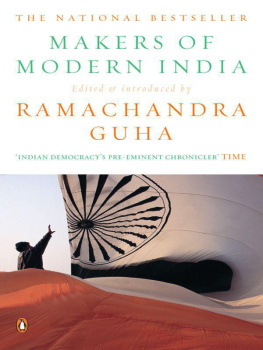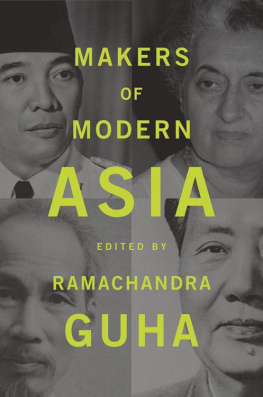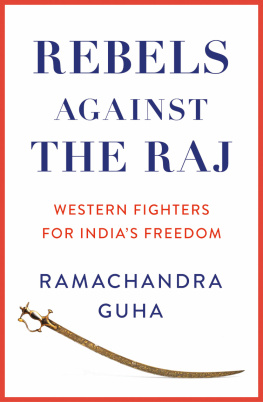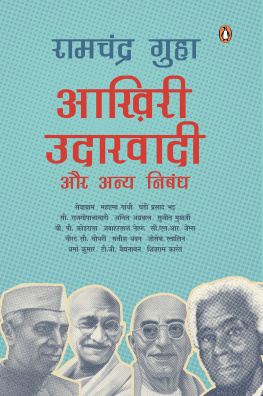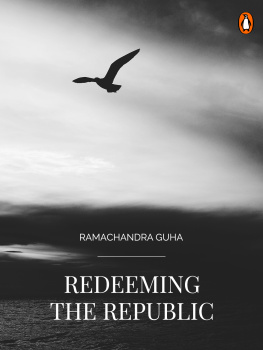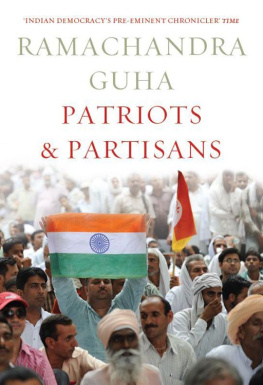RAMACHANDRA GUHA - INDIA AFTER GANDHI
Here you can read online RAMACHANDRA GUHA - INDIA AFTER GANDHI full text of the book (entire story) in english for free. Download pdf and epub, get meaning, cover and reviews about this ebook. publisher: PICADOR INDIA, genre: Politics. Description of the work, (preface) as well as reviews are available. Best literature library LitArk.com created for fans of good reading and offers a wide selection of genres:
Romance novel
Science fiction
Adventure
Detective
Science
History
Home and family
Prose
Art
Politics
Computer
Non-fiction
Religion
Business
Children
Humor
Choose a favorite category and find really read worthwhile books. Enjoy immersion in the world of imagination, feel the emotions of the characters or learn something new for yourself, make an fascinating discovery.
- Book:INDIA AFTER GANDHI
- Author:
- Publisher:PICADOR INDIA
- Genre:
- Rating:3 / 5
- Favourites:Add to favourites
- Your mark:
- 60
- 1
- 2
- 3
- 4
- 5
INDIA AFTER GANDHI: summary, description and annotation
We offer to read an annotation, description, summary or preface (depends on what the author of the book "INDIA AFTER GANDHI" wrote himself). If you haven't found the necessary information about the book — write in the comments, we will try to find it.
INDIA AFTER GANDHI — read online for free the complete book (whole text) full work
Below is the text of the book, divided by pages. System saving the place of the last page read, allows you to conveniently read the book "INDIA AFTER GANDHI" online for free, without having to search again every time where you left off. Put a bookmark, and you can go to the page where you finished reading at any time.
Font size:
Interval:
Bookmark:

For
Ira, Sasha and Suja:
lights on my coast
India is a pluralist society that creates magic with democracy, rule of law and individual freedom, community relations and [cultural] diversity. What a place to be an intellectual!... I wouldnt mind being born ten times to rediscover India.
R OBERT B LACKWILL , departing US ambassador, in 2003
Nobody could be more conscious than I am of the pitfalls which lie in the path of the man who wants to discover the truth about contemporary India.
N IRAD C HAUDHURI ,
The Autobiography of an Unknown Indian (1950)
In recent years, the names of several towns and cities in India have been modified or changed thus Bombay has become Mumbai, Madras has become Chennai and Calcutta has become Kolkata. Likewise, the Bangladeshi capital, Dhaka, was for much of the period covered by this book known as Dacca, while the Chinese capital, Beijing, was until the 1980s referred to as Peking. The usage in this book conforms to historical convention rather than linguistic precision. For example, the capital of Maharashtra is referred to as Bombay until we come to the time when its name was officially changed to Mumbai.
I NDIA AFTER G ANDHI was first published in May 2007, a few months prior to the sixtieth anniversary of the countrys independence from British rule. An expanded and revised edition appeared ten years later. The interval between the second and third editions, however, is somewhat shorter. This is for two reasons. One is substantive, the fact that in the past six years the Republic of India has undergone transformative changes of a kind previously not experienced in so short a time, with the exception perhaps of the first, formative, years of the nation. These radical changes in Indias political, social, economic and cultural life required an updating of the historical narrative.
The last major event covered in the second edition of India after Gandhi were November 2016, and carries on to analyse, as dispassionately as one can, the important events and controversies of the years that followed. I have also written a fresh epilogue to the book, presenting a synoptic view of the exciting and tumultuous journey of the nation since its birth.
The second (and I hope distinctly) subsidiary reason for this new edition is personal. In the preface to the second edition, which immediately follows, I explain how I came to research and write India after Gandhi. As I say there, the project came to me at exactly the right time in my life, when I was neither too inexperienced nor too weary to attempt a work of this kind. I am now in my mid-sixties, and just about able to take stock of significant events since the last edition appeared. Given how hard it is to predict the future course of any country and perhaps especially India one cannot say when there will be sufficient intellectual reason to prepare a fourth edition of this book. I may then be too old or ill, or not around at all. Therefore, for the present, and perhaps for ever, this edition must suffice.
Ramachandra GuhaBengaluru16 August 2022
T HIS BOOK WAS NOT my idea. In November 1997, a British publisher I had not heard of contacted me in Bangalore (as it then was). He had read an essay of mine in the Oxford historical journal, Past and Present, and wished to meet me. He was in Delhi soon; would I be there too?
As it turned out, I had a meeting in Delhi the week the publisher was in town. We met in his hotel, in a large airy atrium that served as a coffee shop. His name was Peter Straus, and he ran Picador, where he published, among other writers, V. S. Naipaul and Michael Ondaatje. He was carrying a copy of the Past and Present issue with my article in it. What, he asked, was the project I was working on now?
I pointed to the journal in his hands. I was, I told him, developing the essay he had read (on the social history of sport in colonial India) into a book. Would I consider abandoning that project, asked Peter Straus, and write a history of independent India instead?
This second question left me speechless. The scale and scope of the book he was suggesting seemed beyond my ambitions, and my training. I had begun writing occasionally for the press, but I still saw myself as principally an academic historian, who wrote for his peers and for university students. The books I had previously written had been on topics I had chosen myself: a social history of peasant protest in the Himalaya, two co-authored books on environmental conflicts, a biography of the maverick anthropologist Verrier Elwin. All had been published by university presses, and all had been highly focused, bounded by theme and/or region. How could I write, for a general readership, a single-volume history of a country as large and as diverse as India?
I am not normally at a loss for words, either in conversation or in print. Now, as I stayed silent, the visiting publisher asked some more questions. Was it not the case that historians of India stopped their narratives at 1947? Now that the nation had observed the fiftieth anniversary of its founding, would not a look back at its complicated and tumultuous history be a subject worthy of scholarly analysis? Would not such a book interest younger Indians, not to speak of the world at large? Did I not (as the article in Past and Present showed) greatly enjoy reading unpublished letters and manuscripts, as well as newspapers on microfilm?
To all these questions I nodded assent. So then, said the publisher, I agreed that such a history needed to be written. Why not research and write it myself? Why not at least think about it?
We left it at that. A month later, Peter Straus rang me in Bangalore, and asked whether I had given the idea further thought. I had, indeed, and sensed its appeal. He then told me to send a formal proposal, which I did, whereupon a contract was signed in March 1998, with a delivery date specified for March 2002, or four years later.
Now the job had to be done, the research begun. Where would I start? As I explain in the prologue to the first edition, had I been a historian of Europe or of a European country, commissioned to write a history of his country or continent since the end of World War II, I would have ordered five hundred books from the library scholarly studies on politics, culture, law, economic policy and social change, with biographies of major or significant politicians thrown in. And, with these in hand, I would have attempted a work of synthesis.
In India, such secondary works were not available, for contemporary history as a branch of history had not yet been born. I had therefore to assemble the relevant primary materials on my own. The National Archives had plenty of state records on the colonial period, but precious few for the period since 1947. Fortunately, there was the Nehru Memorial Museum and Library (NMML), which had the private papers of hundreds of influential and important Indians. The NMML also had a superb collection of newspapers and journals on microfilm.
I spent many enjoyable months at the NMML, looking through its extraordinarily rich collection of (mostly unused) materials on the post-1947 period. The endnotes to this book provide more details on the numerous collections I consulted. Among them, the two that were perhaps most revealing were the papers of C. Rajagopalachari, the great friend-turned-critic of Jawaharlal Nehru, and of P. N. Haksar, Indira Gandhis closest political confidant between 1967 and 1974.
Font size:
Interval:
Bookmark:
Similar books «INDIA AFTER GANDHI»
Look at similar books to INDIA AFTER GANDHI. We have selected literature similar in name and meaning in the hope of providing readers with more options to find new, interesting, not yet read works.
Discussion, reviews of the book INDIA AFTER GANDHI and just readers' own opinions. Leave your comments, write what you think about the work, its meaning or the main characters. Specify what exactly you liked and what you didn't like, and why you think so.

